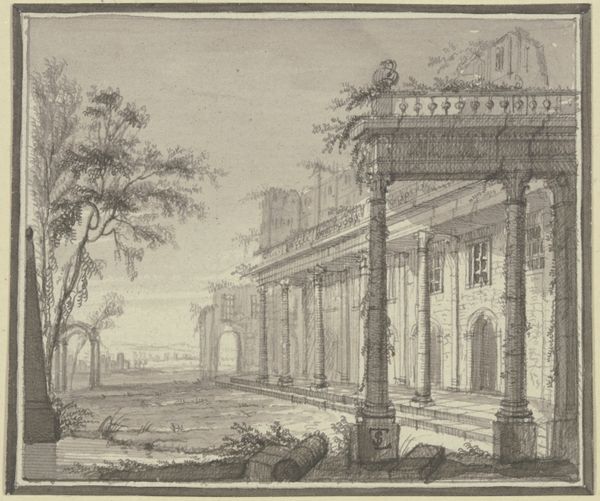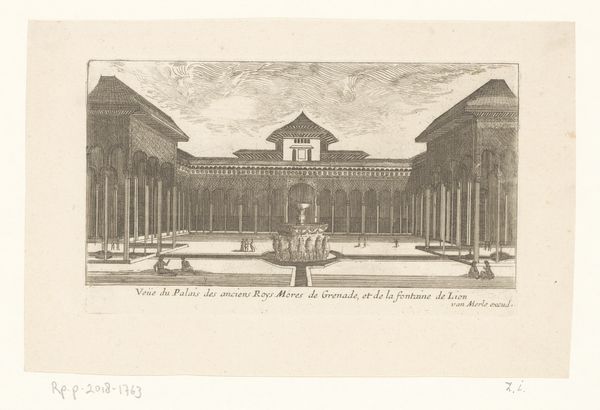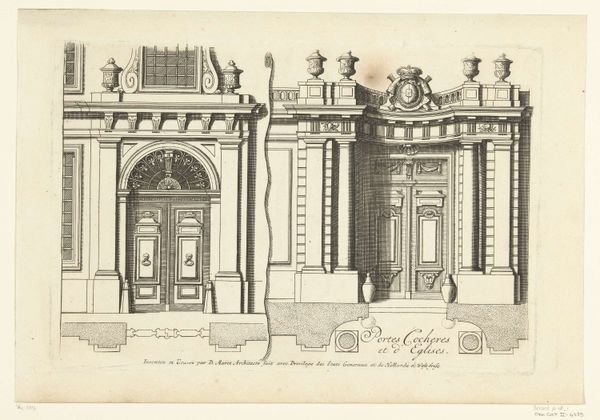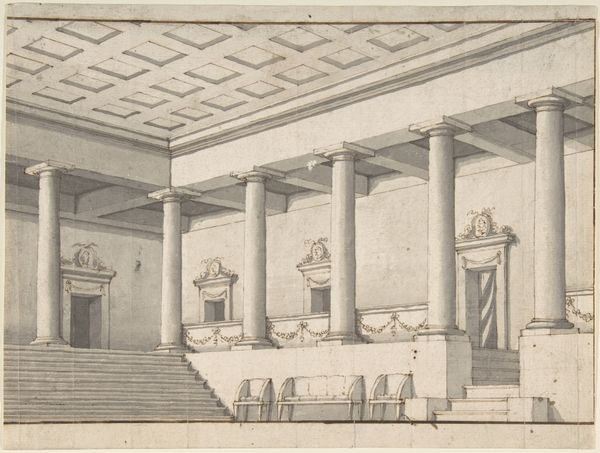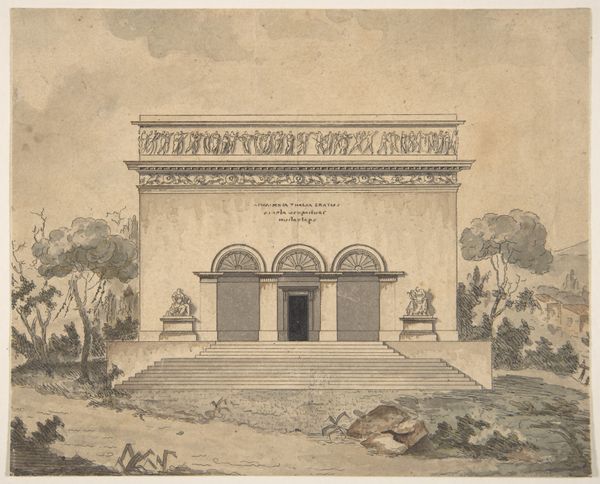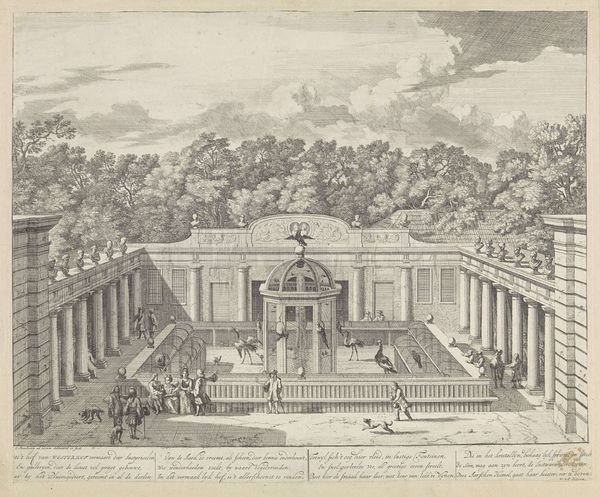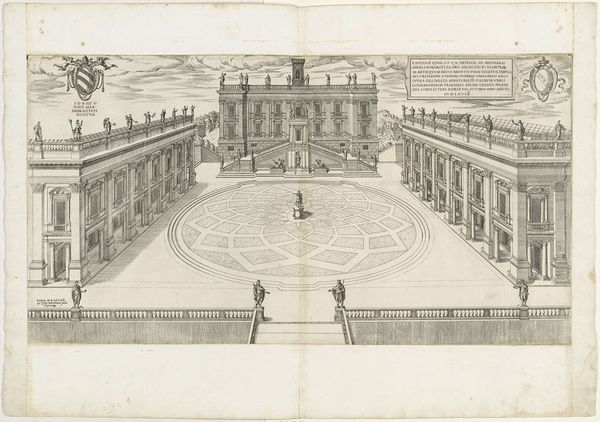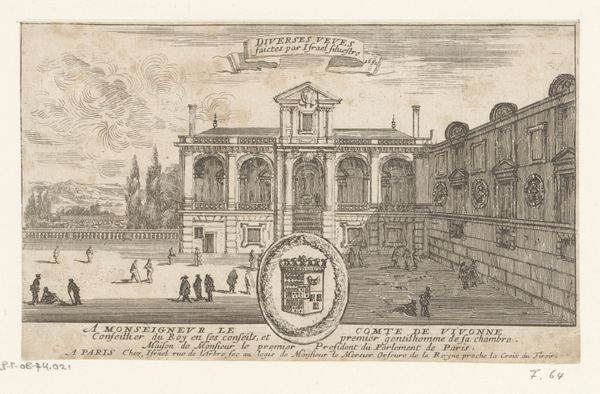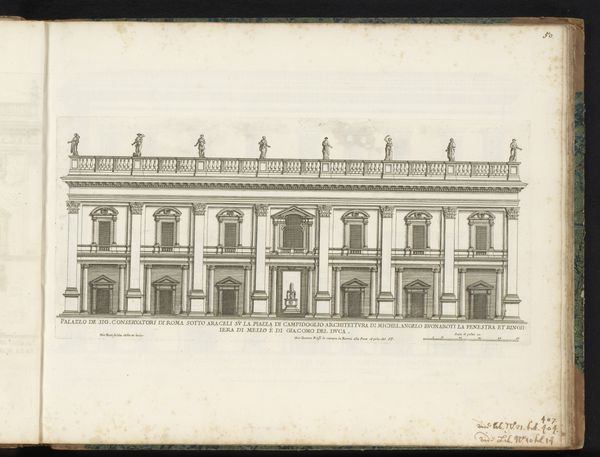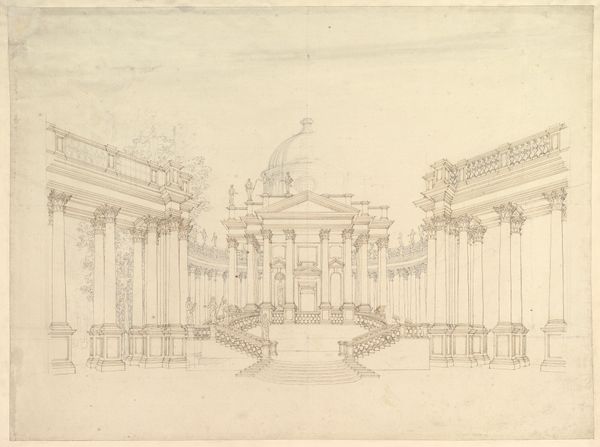
Design for a Neoclassical Building, Thought to be a School of Arts for the City of Stockholm 1770 - 1794
0:00
0:00
drawing, coloured-pencil, pencil, architecture
#
drawing
#
neoclacissism
#
coloured-pencil
#
coloured pencil
#
pencil
#
history-painting
#
architecture
Dimensions: 10 15/16 x 20 11/16 in. (27.8 x 52.6 cm)
Copyright: Public Domain
Editor: This colored pencil drawing, "Design for a Neoclassical Building, Thought to be a School of Arts for the City of Stockholm" was created sometime between 1770 and 1794 by Louis Gustave Taraval. It feels so formal and…idealized. What do you see in this piece? Curator: It's a fascinating projection of power and control through architecture, isn't it? Neoclassicism, as a movement, was deeply intertwined with the political and social upheavals of the late 18th century. We see the rediscovery of Greco-Roman ideals influencing not just aesthetics, but also conceptions of civic virtue and order. Consider how the building is elevated, literally and metaphorically, above the natural landscape, emphasizing human reason and dominion over nature. How do you think the function of the building as a potential 'School of Arts' further informs its design? Editor: I hadn't thought about the building's *purpose* in relation to its aesthetic… So, the rigorous geometry, the imposing facade, the implication that the arts themselves need to be taught under this very controlled, rational structure? Curator: Precisely! And let's not forget the context. Sweden during this period was undergoing significant shifts in governance and national identity. Think about how spaces such as this serve as symbols that project stability and authority, almost as if art education needs to reinforce these ideas within this space, as well as beyond. Does this perspective change your initial feeling of idealization at all? Editor: It does, quite a bit. I see a deliberate construction of values embedded within the very structure of the building itself. I still find the drawing beautiful, but I also recognize a subtext that's really thought-provoking. Curator: Exactly. Recognizing those power dynamics allows us to engage with the work on a deeper level, acknowledging the complex relationship between art, power, and society. Editor: That's a brilliant way to look at it, thank you!
Comments
No comments
Be the first to comment and join the conversation on the ultimate creative platform.

